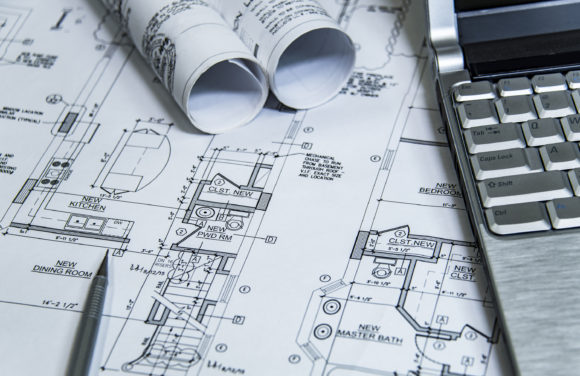Architectural and Engineering Malpractice: Addressing Negligence in Design, Planning, or Construction
Table of Contents
- I. Introduction
- II. What is Architectural and Engineering Malpractice?
- III. Common Types of Negligence in Architecture and Engineering
- IV. Consequences of Malpractice
- V. Legal Recourse for Victims
- VI. The Role of Legal Professionals in Malpractice Cases
- VII. Preventing Architectural and Engineering Malpractice
- VIII. Conclusion
- IX. FAQs (Optional)
I. Introduction
Architectural and engineering malpractice can have devastating consequences, as evidenced by high-profile structural failures like the collapse of the Rana Plaza in Bangladesh in 2013, which resulted in over 1,100 fatalities. Such tragedies underscore the critical importance of professional diligence in the construction industry. This article explores the concept of malpractice in architecture and engineering, emphasizing the need for accountability and the prevention of negligence in design, planning, and construction processes.
II. What is Architectural and Engineering Malpractice?
Definition
Architectural and engineering malpractice refers to the failure of professionals in these fields to meet the accepted standards of care, resulting in harm to clients, the public, or both. This negligence can manifest in various forms, including design errors, planning failures, and inadequate oversight during construction. Malpractice is not merely a matter of poor performance; it involves a breach of the duty of care that professionals owe to their clients and the public.
Professional Standards and Duty of Care
Architects and engineers are bound by a duty of care, which requires them to perform their work with the competence and diligence expected of professionals in their field. This duty encompasses adherence to building codes, safety regulations, and ethical standards. When professionals fail to uphold these standards, they may be held liable for malpractice. The American Institute of Architects (AIA) and the National Society of Professional Engineers (NSPE) provide guidelines and codes of ethics that outline the expected conduct for professionals in these fields.
Roles of Architects and Engineers
Architects are responsible for the aesthetic and functional design of buildings, while engineers focus on the structural integrity and safety of those designs. Both play crucial roles in ensuring that construction projects are completed successfully and safely. Their collaboration is essential to prevent errors that could lead to significant consequences. Architects must ensure that their designs are not only visually appealing but also structurally sound, while engineers must ensure that the designs can be executed safely and efficiently.
III. Common Types of Negligence in Architecture and Engineering
1. Design Errors
Design errors are among the most common forms of malpractice. These can include:
- Flawed Blueprints or Calculations: Mistakes in the design phase can lead to structural weaknesses. For example, incorrect load calculations can result in buildings that cannot support their intended weight. A notable case is the collapse of the Hyatt Regency walkway in 1981, where design flaws led to a catastrophic failure, resulting in 114 deaths.
- Non-compliance with Building Codes: Failure to adhere to local building codes and safety regulations can lead to unsafe structures. This negligence can result in legal repercussions and financial losses. For instance, the Grenfell Tower fire in London in 2017 highlighted severe lapses in compliance with fire safety regulations, leading to tragic consequences.
2. Planning Failures
Planning failures can significantly impact the success of a construction project. Common issues include:
- Inadequate Site Analysis: Failing to conduct thorough site assessments can lead to unforeseen challenges, such as poor soil conditions or environmental hazards. For example, the construction of the Millennium Dome in London faced significant delays and cost overruns due to inadequate site analysis and planning.
- Mismanagement of Resources: Poor project management can result in delays, cost overruns, and ultimately, project failure. The Boston Big Dig project is a prime example, where mismanagement led to significant budget overruns and construction delays, ultimately costing taxpayers billions.
3. Construction Oversight Negligence
Negligence during the construction phase can have dire consequences. Key issues include:
- Inadequate Supervision: Failure to properly oversee construction activities can lead to the use of substandard materials or unsafe practices. For instance, the collapse of a parking garage in Miami in 2018 was attributed to inadequate oversight and failure to follow safety protocols.
- Use of Substandard Materials: Choosing inferior materials can compromise the safety and longevity of a structure, leading to potential failures. The use of substandard concrete in the construction of the San Francisco-Oakland Bay Bridge led to significant safety concerns and costly repairs.
IV. Consequences of Malpractice
The consequences of architectural and engineering malpractice can be severe:
- Structural Failures: Negligence can lead to catastrophic failures, such as building collapses, which pose significant risks to occupants and the public. The collapse of the Ronan Point apartment building in London in 1968 due to a gas explosion highlighted the dangers of structural negligence.
- Financial Losses: Project owners may face substantial financial losses due to repairs, legal fees, and loss of business. The financial fallout from the collapse of the Hard Rock Hotel in New Orleans in 2019 serves as a stark reminder of the economic impact of negligence.
- Safety Risks: Malpractice can endanger the lives of occupants and the general public, leading to injuries or fatalities. The tragic collapse of the Champlain Towers South in Surfside, Florida, in 2021, which resulted in 98 deaths, underscores the critical importance of safety in construction.
- Legal and Reputational Consequences: Professionals found liable for malpractice may face lawsuits, loss of licenses, and damage to their reputations. The legal battles following the Grenfell Tower fire have led to significant scrutiny of the architects and engineers involved, resulting in lasting damage to their professional reputations.
V. Legal Recourse for Victims
Identifying Negligence
Victims of architectural and engineering malpractice can take several steps to identify negligence:
- Reviewing Contracts and Plans: Analyzing project documentation can reveal discrepancies and failures in duty of care. Victims should carefully examine contracts, design plans, and correspondence to identify any lapses in professional standards.
- Engaging Expert Witnesses: Expert evaluations can provide insights into whether the professionals involved met industry standards. Expert witnesses can help establish the standard of care expected in the industry and whether it was breached.
Filing a Claim
Victims may pursue legal action through:
- Breach of Contract Claims: If contractual obligations were not met, victims can seek damages for losses incurred. This may involve proving that the architect or engineer failed to deliver services as promised in the contract.
- Professional Negligence Lawsuits: These lawsuits can hold architects and engineers accountable for their failures. Victims must demonstrate that the professional's negligence directly caused their damages.
Compensation
Victims may be entitled to various forms of compensation, including:
- Repair Costs: Expenses incurred to rectify design or construction errors. This can include costs for structural repairs, renovations, or complete rebuilding.
- Financial Losses: Compensation for lost revenue or increased costs due to project delays. Victims may seek damages for lost business opportunities resulting from the negligence.
- Personal Injury Claims: Damages for injuries sustained due to negligence. If a victim was injured as a result of a structural failure, they may pursue compensation for medical expenses, lost wages, and pain and suffering.
VI. The Role of Legal Professionals in Malpractice Cases
Importance of Hiring a Lawyer
Engaging a lawyer experienced in construction law is crucial for navigating malpractice claims. Legal professionals can provide valuable guidance and representation throughout the process. They can help victims understand their rights, evaluate their claims, and determine the best course of action.
Steps to Build a Case
A legal team typically undertakes several steps to build a strong case:
- Evidence Gathering: Collecting relevant documentation, including contracts, plans, and correspondence. This evidence is essential for establishing the facts of the case and demonstrating negligence.
- Expert Testimony: Engaging industry experts to provide testimony on standards of care and negligence. Expert witnesses can help clarify complex technical issues for the court and establish whether the professionals involved acted within the accepted standards.
Negotiation Strategies
Legal professionals may employ various strategies to negotiate settlements or pursue litigation, including:
- Mediation: Attempting to resolve disputes amicably through negotiation. Mediation can be a cost-effective way to settle disputes without going to trial.
- Litigation: Preparing for court if a settlement cannot be reached. If negotiations fail, legal teams must be prepared to present their case in court, which requires thorough preparation and a strong legal strategy.
VII. Preventing Architectural and Engineering Malpractice
Importance of Thorough Project Planning
Effective project planning is essential to prevent malpractice. This includes:
- Clear Communication: Ensuring all parties understand their roles and responsibilities. Regular meetings and updates can help keep everyone informed and aligned.
- Detailed Documentation: Maintaining accurate records of all project-related communications and decisions. Proper documentation can serve as evidence in case of disputes and help clarify responsibilities.
Ensuring Compliance with Building Codes
Adhering to local building codes and regulations is critical for safety and legal compliance. Regular training and updates on code changes can help professionals stay informed. Compliance checks should be integrated into the project timeline to ensure that all aspects of the construction meet legal requirements.
Regular Inspections and Quality Control
Implementing regular inspections during construction can identify potential issues early, allowing for timely corrections. Quality control measures should be established to ensure materials and workmanship meet required standards. This can include hiring third-party inspectors to provide an unbiased assessment of the work being done.
The Value of Professional Liability Insurance
Professional liability insurance can protect architects and engineers from financial losses due to malpractice claims. This insurance provides coverage for legal fees, settlements, and damages awarded in lawsuits. Professionals should ensure they have adequate coverage to protect themselves against potential claims.
VIII. Conclusion
Architectural and engineering malpractice poses significant risks to public safety and financial stability. By understanding the causes and consequences of negligence, professionals can take proactive steps to mitigate risks. Victims of malpractice should seek legal assistance to explore their options for recourse. Engaging with a construction law expert can provide valuable guidance in navigating these complex issues.
IX. FAQs (Optional)
What are the common warning signs of malpractice in construction projects?
Common warning signs include frequent design changes, missed deadlines, and lack of communication among project stakeholders. If clients notice these issues, they should investigate further to determine if negligence may be involved.
How long do I have to file a malpractice lawsuit?
The statute of limitations for filing a malpractice lawsuit varies by jurisdiction but typically ranges from one to six years. It is crucial for victims to act promptly to preserve their rights.
Can I hold both the architect and engineer accountable for the same issue?
Yes, both architects and engineers can be held liable for negligence if their actions contributed to the same issue. This can complicate legal proceedings, as multiple parties may be involved in the case.
Supporting Images
Afzal Hosen Mandal
Position: Lawyer at Afzal and Associates
Specializations: Civil Litigation, Criminal Defense, Property Law
Location: Narsingdi Judge Court, Bangladesh
Contact Information:
- Email: advafzalhosen@gmail.com, advafzalhosen@outlook.com
- Phone: 01726634656
Follow Me:
Website & Blog: Afzal and Associates Official Website
GitHub: Afzal's GitHub Profile
About Afzal and Associates: Learn more about us
Contact Us: Contact Afzal and Associates





0 Comments